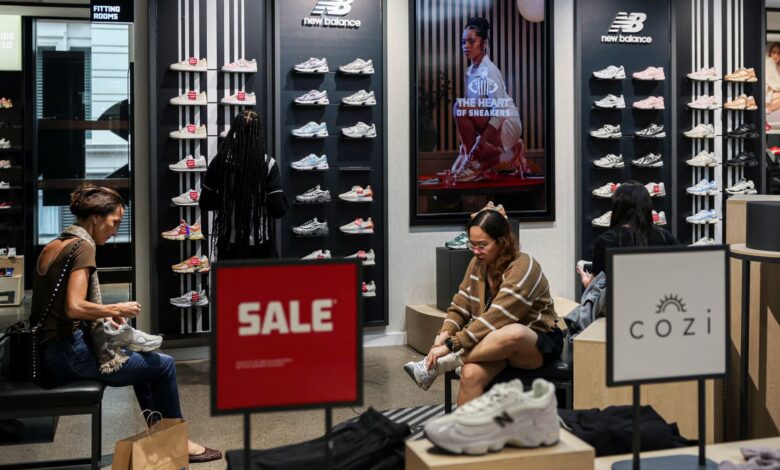Retail sales May 2025 fell 0.9%, worse than expected as consumers pulled back

Consumer spending took a hit in May, according to a report from the Commerce Department. Retail sales dropped by 0.9%, exceeding the expected 0.6% decrease. This decline follows a slight loss of 0.1% in April and reflects a sense of uncertainty surrounding the economy due to factors like tariffs and geopolitical tensions. Despite this drop, sales have still risen by 3.3% compared to a year ago.
When excluding auto sales, the decline was even steeper at 0.3%, contrary to the predicted 0.1% increase. However, when certain categories such as auto dealers, building materials suppliers, and gas stations are excluded, sales actually saw a 0.4% increase. This particular reading, known as the control group, is crucial in calculating the gross domestic product.
The slowdown in retail sales has been evident throughout the year, with a peak in March when consumers rushed to make purchases before the anticipated tariff announcement in April. Categories like building materials and garden stores experienced a 2.7% drop, while lower energy prices led to a 2% decline in gasoline station receipts. Car sales also took a hit, decreasing by 3.5%.
On a more positive note, miscellaneous retailers saw a 2.9% increase in sales, online sales rose by 0.9%, and furniture stores reported a 1.2% increase. Despite these bright spots, stock market futures remained negative after the release of the report, and Treasury yields also fell.
Heather Long, chief economist at Navy Federal Credit Union, noted that consumers are becoming more cautious with their spending, seeking deals and avoiding big-ticket purchases unless they see a significant value. This behavior may be attributed to concerns about higher prices due to tariffs and other economic uncertainties.
While consumer sentiment showed improvement in May, the ongoing trade war and tariff disputes have dampened optimism among both consumers and businesses. However, recent developments in trade negotiations have provided some relief, leading to more positive outlooks.
Looking ahead, GDP is expected to rebound after a decline in the first quarter. Second-quarter growth projections stand at 3.8%, according to the Atlanta Federal Reserve’s GDPNow tracker. Import prices remained flat in May, contrary to the anticipated 0.1% decrease, while export prices fell by 0.9%.
In conclusion, the recent dip in retail sales highlights the impact of economic uncertainties on consumer spending habits. As the trade war continues to unfold, it remains to be seen how these factors will influence future retail trends and overall economic growth.





